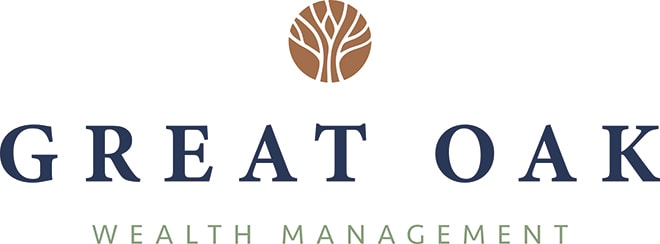A Simplified Employee Pension IRA, or SEP IRA, is an easy, low-cost way to offer retirement benefits to employees for a small business. Any sole proprietor, partnership, corporation, or nonprofit can set one up. However, it’s best suited to sole proprietors and small businesses with few employees.
What Is a SEP IRA?
Even though the “P” in SEP stands for pension, a SEP IRA is a defined contribution retirement plan, much like a 401k. The one difference is that only the employer makes contributions for eligible employees with a SEP IRA. Employees are not permitted to defer their income.
SEP IRA contributions by the employer are not considered income to the employee. However, SEP Roth contributions will be regarded as income and reported on the employee’s W2.
SEP IRA contributions grow tax-deferred, while withdrawals are taxed as regular income, similar to other retirement plans. SEP Roth IRA contributions grow tax-deferred, while withdrawals are tax-free. If you’re under age 59.5, withdrawals from a SEP IRA and earnings from a SEP Roth IRA are subject to a 10% penalty unless you qualify for one of the exceptions.
The other difference is that SEPs provide business owners with contribution flexibility. The owner can make multiple contributions a year or make one significant contribution at the end of the year or even as late as the tax filing date.
Another point of flexibility is that SEP contributions are optional. The company is not required to make annual contributions. So, deciding to contribute, or how much, can change each year. When business is down, contributions can be reduced or eliminated.
SEP IRA contribution limits
In a SEP IRA, annual contribution limits cannot exceed the lesser of:
- 25% of compensation for each eligible employee
or
- $70,,000 (2025)
There are no catch-up contributions at age 50+. Let’s not forget that business owners also get tax deductions for their contributions. Also, if you have more than one defined contribution plan for employees, the contribution limits apply to employer contributions to all accounts.
Self-Employed Calculation
The self-employed are both the employer and employee, and the same contribution limits apply. However, the maximum deductible contribution is calculated from net profits.
NetProfits – 1/2 of the self-employment tax = SEP contribution
SEP IRA Requirements
As mentioned, SEPs are best for self-employed people or small-business owners with few or no employees due to the following requirements.
- If you have eligible employees, you must contribute on their behalf. Eligible participants are 21 or older employees who have worked for three of the past five years and earned at least $750 in the past year.
- The contribution percentage of compensation must be equal for everyone. If the owner wants to contribute 20%, they must contribute 20% for every eligible employee.
- Required contributions include those employees who only worked for part of the year. Employees who leave the company for any reason must receive a SEP contribution as long as they are eligible and perform work during the year.
How to set up a SEP IRA
It’s easy to open and maintain a SEP IRA Plan for your employees. A SEP IRA can be created any time before a company’s tax filing deadline, and contributions can be made for that tax year. For instance, if an S corporation’s tax deadline is March 15, 2025, they may establish a SEP before that date and make 2024 contributions. The three steps for setting it up:
- Create a written agreement. This is done with IRS Form 5305-SEP.
- Provide eligible employees with information about the SEP. This information is provided at the initial setup, when employees become eligible, and annually. Giving them Form 5305-SEP qualifies.
- Set up a SEP IRA for each eligible employee with the account provider. You have to choose a custodian.
What Else Do I Need to Know?
There are several other facts about a SEP to be aware of.
- Required Minimum Distributions (RMDs): Like traditional IRAs and 401(k)s, SEPs have RMDs beginning at age 73.
- Employees own and control their accounts.
- Some employers allow employees to make traditional IRA contributions to their SEP IRA accounts. If they qualify, they can contribute up to $7,000 ($8,000 if you are 50+). This contribution is not in addition to any other traditional or Roth IRA contribution. It is entirely separate from any employer contributions. It can be combined with a traditional IRA or a Roth IRA.
- Investments: The selection typically includes stocks, bonds, and mutual funds.
Why or why not a SEP IRA
Whether or not a SEP IRA is appropriate can be viewed from two perspectives: the owner and the employee.
It’s been mentioned a few times that a SEP IRA is most appropriate for small businesses with few employees because the employer contribution has to be the same for all participants. This rule is sometimes problematic for company owners who want to ramp up retirement savings. They have to ramp up contributions for everyone. That isn’t a problem when you are both the employer and the only employee.
Since it is only employer contributions, the SEP is a somewhat limiting retirement plan from the employee’s perspective. The employee is left to the generosity of the employer. Maybe the employee wants to save more. Yes, the company may allow the previously mentioned annual IRA contribution. Still, the employee may not qualify to make an IRA contribution or want to contribute more.
Consider the other options if your small business is more financially secure or has more employees. Check out our SIMPLE IRA or Solo 401k blog posts to learn if they would better fit your situation.
The Bottom Line
The SEP IRA is a cost-effective, easy way to provide retirement savings for businesses with few employees. However, it is only appropriate for a particular type of small business. Understanding the benefits of a SEP IRA, the requirements, and how that affects the owners’ situation is critical.
Are you unsure which type of small business plan is right for you? Don’t hesitate to contact us to help you analyze the most beneficial retirement savings and tax-efficient option for your business.








